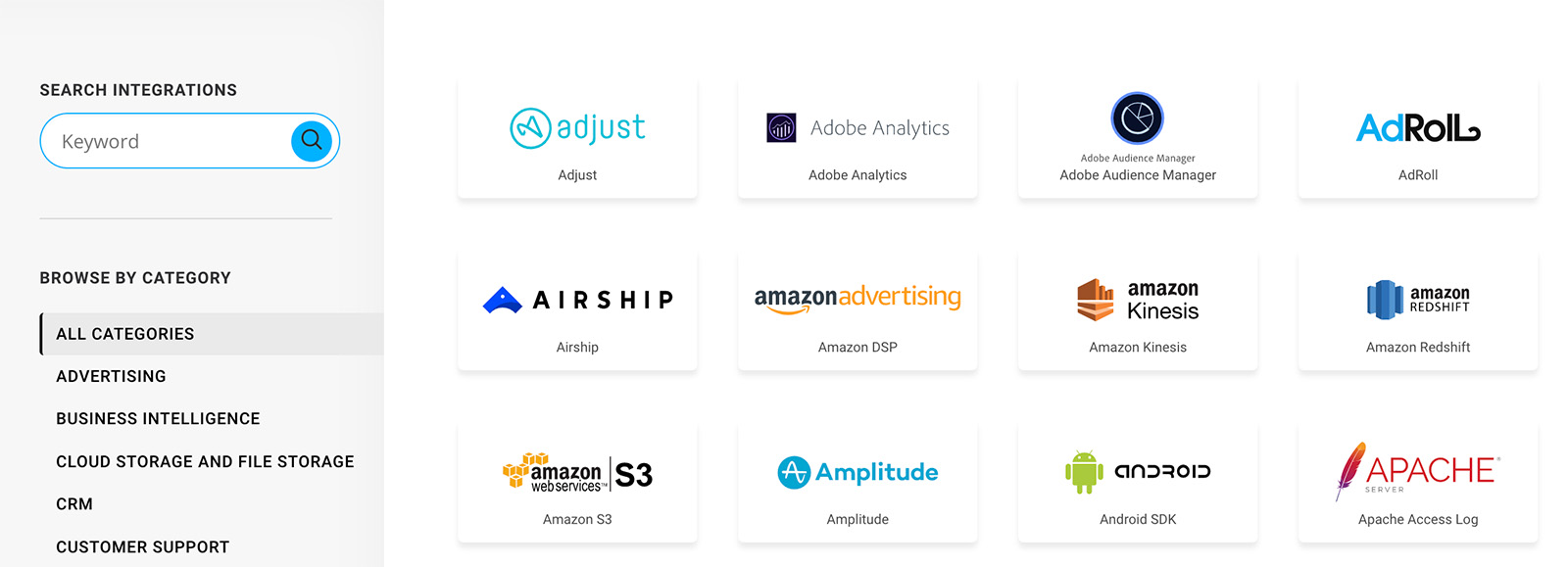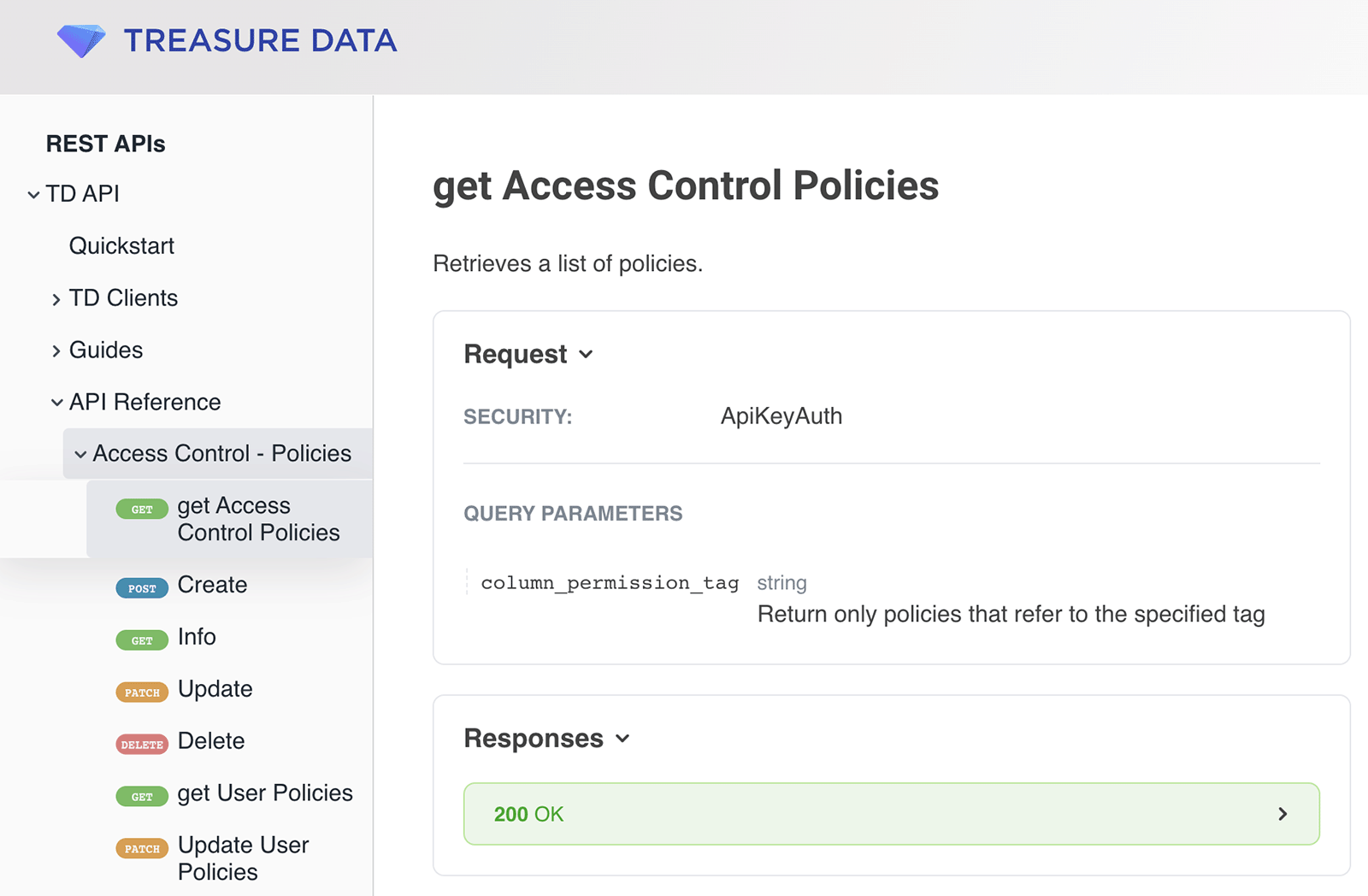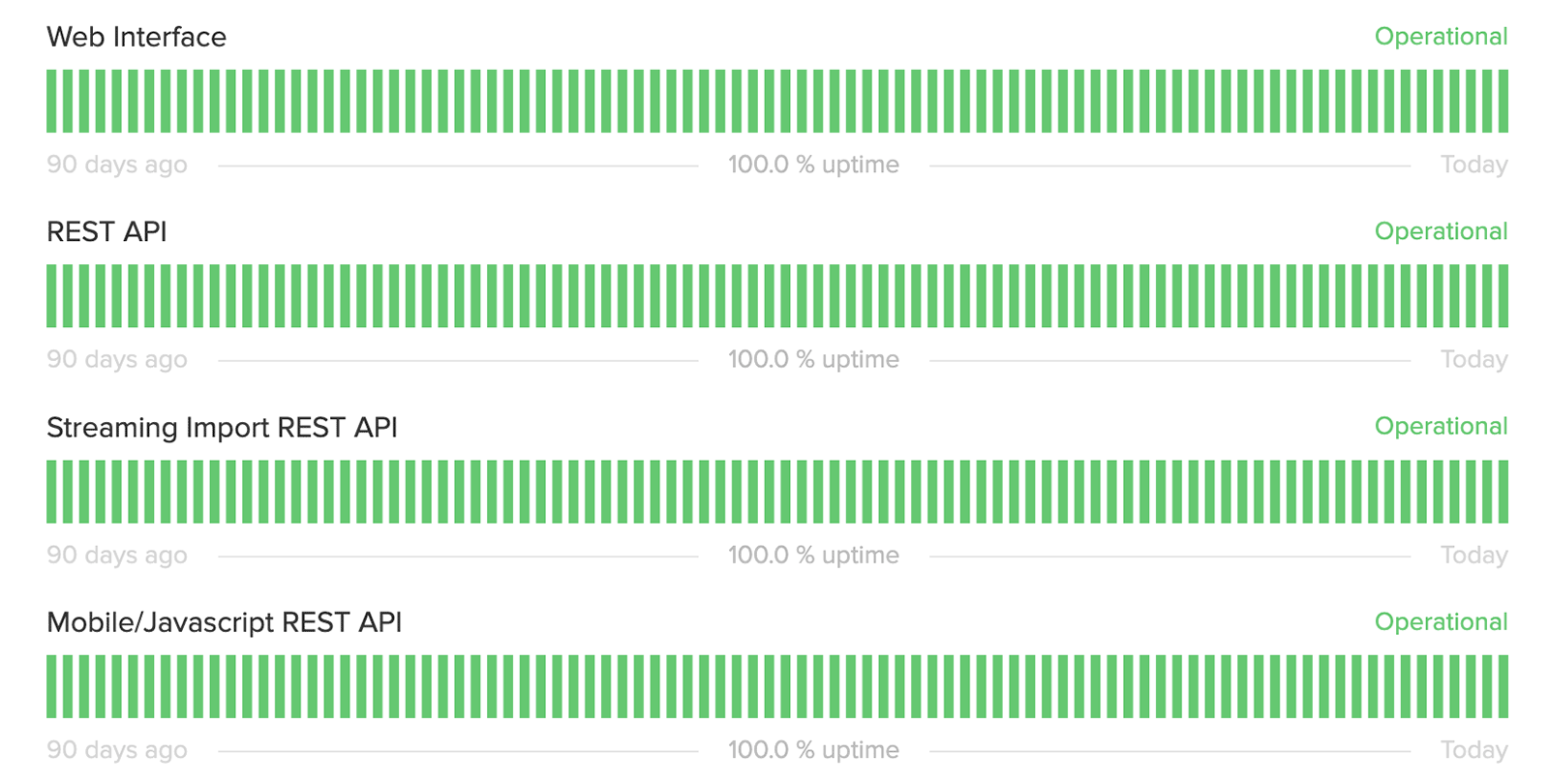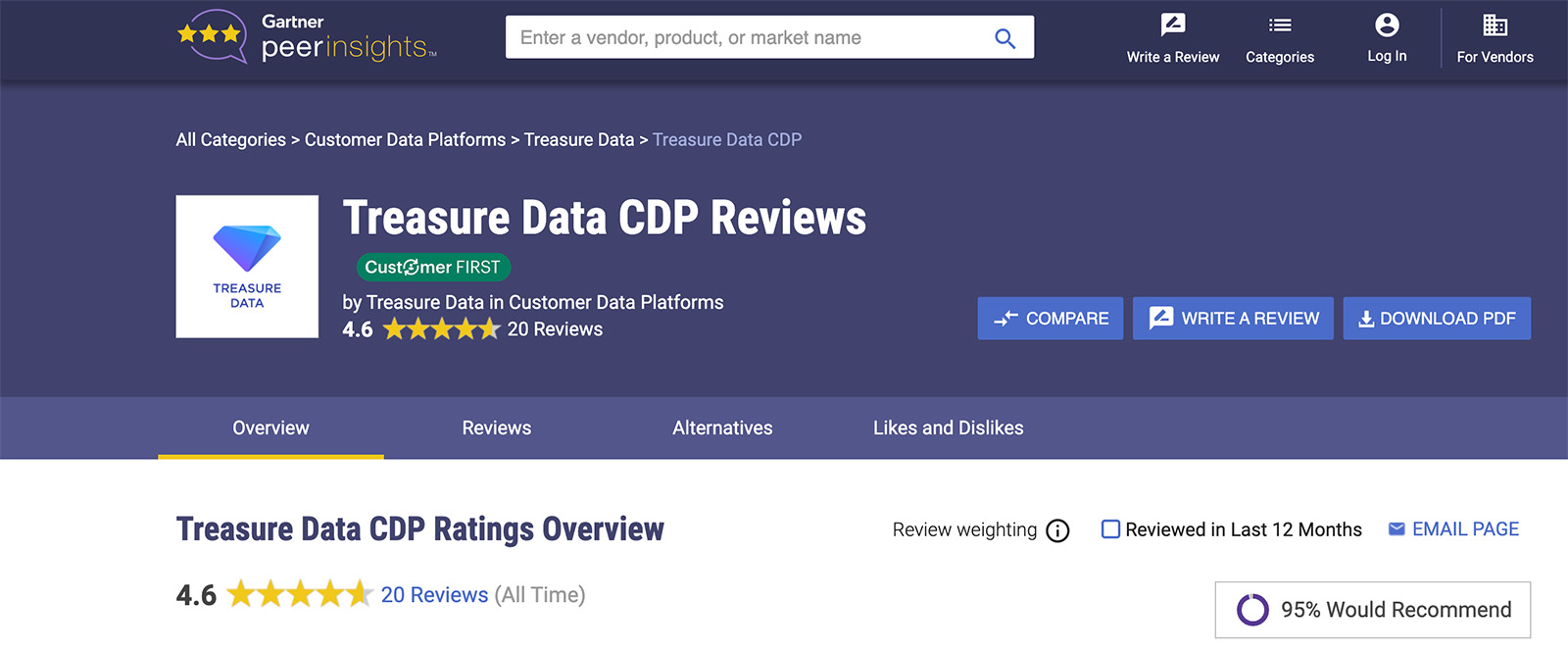Six Things to Consider When Evaluating CDP Integrations
Last updated April 21, 2022
For as long as Customer Data Platforms (CDP) have been around, the ability to integrate with a larger tech stack has been essential. And for good reason: without integrations, a CDP isn’t much more than an expensive database.
This is why a careful assessment of a CDP’s integration capabilities is an essential part of any CDP evaluation. As you do your evaluation, here are six key factors to consider.
1. Check the Integrations Catalog
First and foremost, when you’re looking for information about integrations, check the CDP’s integrations catalog. The catalog is the natural place to start because these pre-built, out-of-the-box (OOTB) integrations will be doing most of the heavy lifting when it comes to moving data in and out of the platform. You can see the typical look and feel of a CDP integrations catalog in Figure 1. Click here to access Treasure Data’s full Integrations Catalog.

Figure 1. Partial look at Treasure Data’s Integrations Catalog page.
The most obvious task for you to do is to compare the catalog with your existing tech stack. How well will the CDP fit? The answer doesn’t need to be, “perfectly,” but the pre-built integrations should cover at least a majority of the technologies in your customer data stack.
While you’re browsing through the catalog, you can also get a feel for the depth and breadth of the CDP’s integrations. This, in turn, is a good proxy for how well the CDP will integrate with your future tech stack. How many pre-built integrations are there? Dozens? Hundreds? Do the source integrations cover a variety of categories, such as web, mobile, pixel, and IoT? What about the destination categories, such as analytics, advertising, and storage? The wider and deeper the catalog today, the better it will integrate with your tech stack tomorrow.
2. Look For a Dedicated CDP Integrations Team
Because integrations are so essential, many of the best CDPs will have a dedicated team for building and maintaining integrations. So, as part of your evaluation process, find out whether a CDP integrations team exists. If it does, are they willing to work with you to build new integrations? How willing? Perhaps the integrations team can plug any gaps in your integration strategy.
One last thing about integration teams: although the catalog may suggest that every integration is created equal, in reality they are not. Some are thoughtfully designed, rigorously tested, and meticulously maintained; others are hastily built, hurriedly deployed, and quickly left behind. Since the integrations teams are primarily responsible for development and maintenance of these integrations, the presence of an integrations team bodes well for the performance of the integrations themselves.
3. Check Out the Product Roadmap
While asking about the integrations team, also ask to see the product roadmap. A CDP is a long-term investment; you shouldn’t expect to change CDPs every year or two. As such, your CDP needs to integrate not only with your tech stack of today, but also your tech stack of tomorrow. The product roadmap can help you gauge just how well your CDP and tech stack will integrate together in the future.
Once you get the roadmap in your hands, look for two things. One: how many integrations are planned for release in the near-term future? This provides a nice estimate of the capacity for building and releasing new integrations. Two: are any of your “missing” integrations just “hiding” on the roadmap? You never know—you might get lucky.
4. Skim Through the Product Documentation
Speaking of integration performance, another place to gauge how well those pre-built integrations will perform is the product documentation. Here’s a link to Treasure Data’s documentation. Admittedly, reading through technical documentation is a dry exercise, but it can reap numerous rewards.
For example, you can assess the user-friendliness of each integration from its documentation. Are the configuration steps clearly defined and easy to follow, or are they muddled and confusing? Can you imagine yourself or your team activating this integration, or will you need to hire a specialist? How long will it take—a few minutes, an afternoon, years and years? Skimming through the documentation will give you a good feel for the answers to these questions.
While you’re perusing the integrations documentation, you might as well check out the API documentation too. The reason: APIs provide a flexible and powerful way to integrate with other systems. Here is a link to Treasure Data’s API Portal. As you can see in Figure 2, it’s possible to drill down to retrieve a list of policies, a list of users and permissions, and more.

Figure 2. Treasure Data’s API Portal—list of policies.
As useful as OOTB integrations are, there will inevitably be a time when you need something more customized. Maybe the integration you need isn’t in the catalog, maybe the pre-built integration doesn’t suit your needs in some way, or maybe you just like working with APIs. Regardless, the power and flexibility provided by APIs makes them very attractive, so make sure to save some analysis for them.
Finally, while you’re browsing through the documentation, keep an eye out for “fine print” that doesn’t show up on the glossy marketing materials. This may include, but is not limited to, product limitations (e.g., “this integration is only available to customers with the ‘business’ plan”), usage ceilings (e.g., “this integration has an ingestion limit of 100 records per second”), and other oddities (e.g., “as of today, this integration is no longer supported!”). Little details like these can make a big difference.
5. Check the Status Page
One last stop to make before leaving the CDP’s website in search of more objective options is the status page. If you haven’t seen one before, the status page will give a snapshot of the platform’s technical performance: latency, reliability, downtime, incidents, etc. Usually, the URL looks similar to Treasure Data’s: status.treasuredata.com. Figure 3 shows a snapshot of part of Treasure Data’s status page as of the date of this blog.

Figure 3. Treasure Data’s status page shows uptime over the past 90 days.
Not every CDP will have a status page, but those that are proud of their platform’s performance certainly will. Uptimes should be consistently north of 99%, response times should be measured in milliseconds, and incidents should be few and far between. You should see a lot of green on the status page.
6. Collect Opinions from Third-party Reviewers
So far, the evaluation has relied primarily on the CDP’s own materials, which leaves one last thing to do: check out some third-party opinions. Gartner Peer Insights, G2, and TrustRadius are some obvious places to start. These sites publish ratings and reviews from verified users who are actually using the products in question, which might look like Figure 4.

Figure 4: Treasure Data’s review page on Gartner Peer Insights.
Skim the reviews and analysis, looking for anything about integrations. Do “integrations” comments fall more in the “pro” category or the “con” category? Here are some insights from Gartner about Treasure Data.
At this point, you’ve done your due diligence and should have a good feel for whether or not this CDP will be able to integrate with your tech stack. If you don’t have a good feeling about the integrations, perhaps it’s time to consider a CDP that offers a more robust integration capability.
Treasure Data is a leader in the CDP market—in large part due to its robust integration capabilities. Treasure Data was recently named a CDP Leader in the IDC MarketScape for Data and Marketing Operations Users. You can read more about it here, or book a demo and talk with Treasure Data directly about your integration needs.